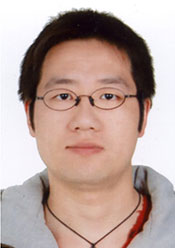Program Information
Cone Artifacts Correction in Iterative Cone Beam CT Reconstruction
H Yan1*, X Wang2 , T Bai1,3 , w lu1,4 , M Folkerts1 , S Jiang1 , X Jia1 , (1) UT Southwestern Medical Center, Dallas, TX, (2) Synopsys Inc., Mountain View, CA, (3) Xi'an Jiaotong University, Xi'an, China (4)Southern Medical University, Guangzhou, China
Presentations
WE-G-18A-3 Wednesday 4:30PM - 6:00PM Room: 18APurpose:For iterative reconstruction (IR) in cone-beam CT (CBCT) imaging, data truncation along the superior-inferior (SI) direction causes severe cone artifacts in the reconstructed CBCT volume images. Not only does it reduce the effective SI coverage of the reconstructed volume, it also hinders the IR algorithm convergence. This is particular a problem for regularization based IR, where smoothing type regularization operations tend to propagate the artifacts to a large area. It is our purpose to develop a practical cone artifacts correction solution.
Methods:We found it is the missing data residing in the truncated cone area that leads to inconsistency between the calculated forward projections and measured projections. We overcome this problem by using FDK type reconstruction to estimate the missing data and design weighting factors to compensate the inconsistency caused by the missing data. We validate the proposed methods in our multi-GPU low-dose CBCT reconstruction system on multiple patients’ datasets.
Results:Compared to the FDK reconstruction with full datasets, while IR is able to reconstruct CBCT images using a subset of projection data, the severe cone artifacts degrade overall image quality. For head-neck case under a full-fan mode, 13 out of 80 slices are contaminated. It is even more severe in pelvis case under half-fan mode, where 36 out of 80 slices are affected, leading to inferior soft-tissue delineation. By applying the proposed method, the cone artifacts are effectively corrected, with a mean intensity difference decreased from ~497 HU to ~39HU for those contaminated slices.
Conclusion:A practical and effective solution for cone artifacts correction is proposed and validated in CBCT IR algorithm.
Funding Support, Disclosures, and Conflict of Interest: This study is supported in part by NIH (1R01CA154747-01)
Contact Email:


